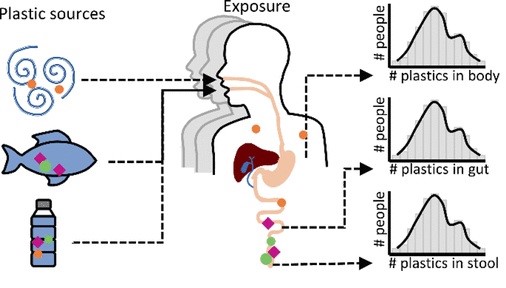
New Exploration of the impact of microplastics on mice suggests that these small patches could induce behavioral changes.
Microplastic could be as wide in the body as they’re in the terrain, according to a new study. Experimenters exposed mice to different situations of microplastics through drinking water and studied the impact of the plastics on organs and behavior.
Microplastics are small plastic patches that are lower than 5 mm long and come from larger plastic that has broken down, similar as apparel, tyres and other particulars.
In the study published in the International Journal of Molecular Science, the authors set up that the small plastic patches accumulated in every towel they examined, including deep in the brain towel.
“Given that in this study the microplastics were delivered orally via drinking water, discovery in apkins similar as the gastrointestinal tract, which is a major part of the digestive system, or in the liver and feathers was always probable,” said study author Jaime Ross, a professor at the University of Rhode Island in the US, in a statement.
“The detection of microplastics in tissues such as the heart and lungs, however, suggests that the microplastics are going beyond the digestive system and likely undergoing systemic circulation”. They also looked at the impact of microplastic exposure for three weeks on the behavior of both youngish and aged mice.
Also read : The Nipah situation has been declared ‘under control,’ but Kerala remains on high alert.
Exposure to the plastics led to behavioral changes in the mice analogous to madness in humans, the experimenters said, with aged mice more heavily impacted. “nothing really understands the life cycle of these microplastics in the body, so part of what we want to address is the question of what happens as you get aged,” Ross said in a statement.
“Are you more susceptible to systemic inflammation from these microplastics as you age? Can your body get relieve of them as fluently? Do your cells respond else to these poisons? ” They called for farther exploration to determine how plastics can change the brain, as they set up that microplastics could drop a protein that impacts cell processes in the brain.
Microplastic formerly detected in mortal towel Microplastics have formerly been detected at intimidating situations in the terrain as plastic waste has increased in recent decades.
A 2019 study from scientists in Canada estimated that humans consume between 39,000 to 52,000 microplastic patches per time depending on age and coitus. This number could increase significantly depending on if the person drinks valve water or bottled water( which exposes them to further microplastics).
Research formerly suggests that these small plastic patches can accumulate in mortal organs. Microplastic have preliminarily been set up in mortal blood, lungs, droppings and indeed in placentas but exploration on how they impact mortal health is limited.
“Overall, since mortal exposure to( microplastics) is ineluctable due to their continuity and pervasiveness in the terrain, it’s essential to more understand their toxin to limit their impact on mortal health,” wrote the authors of the new study.



































































































































































































































































































































































































































































































































































































































































































































































































